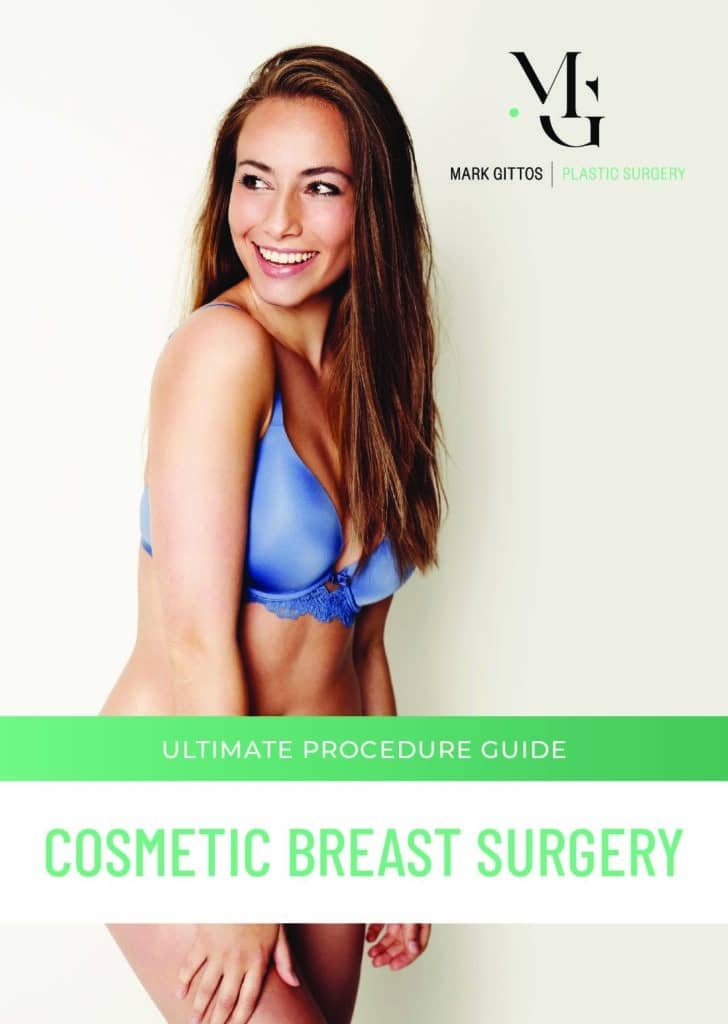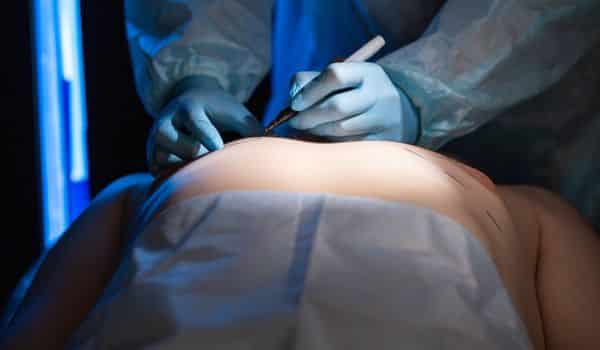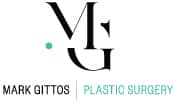Surgery to Reduce the Size of Areola in Auckland NZ by Dr Mark Gittos Plastic Surgeon
There are many plastic surgery solutions to address a range of common cosmetic concerns that you may have about your breasts – from drooping to asymmetry! Many people do not know that some breast cosmetic concerns, such as areola size or shape, can be corrected without a complex procedure such as a breast augmentation or lift.
Dr Mark Gittos is a leading Specialist Plastic Surgeon who is happy to use his wealth of experience in breast cosmetic surgery to deliver long-lasting, high-quality results to his patients. When it comes to breast surgery, Dr Gittos believes in the importance of education and providing high-quality information so that you can make an informed decision on the procedure that is best for you.
If the asymmetry, size, or shape of your areolas is concerning you or making you feel unhappy with the appearance of your breasts, why not consider areola reduction surgery with Dr Gittos to address these concerns?
Download Dr Mark Gittos’ Guide to Cosmetic Breast Surgery

What Is An Areola?
Areolas are the area of pigmented skin that surrounds the nipples. Everybody who has nipples has areolas, regardless of gender, amount of breast tissue, or age – but the size, shape, symmetry, and colour of areolas can vary significantly between people.
The size and shape of your areolas can change during your life due to factors such as:
- Changes in breast size
- Pregnancy or breastfeeding
- Significant weight loss
- Lack of skin elasticity due to age
What Is Areola Reduction Surgery?
An areola reduction is a relatively simple and quick plastic surgery procedure that aims to reduce the size of the areolas, creating a smaller diameter and a more symmetrical shape. Some people have areola reduction surgery alone if they are otherwise happy with the size and shape of their breasts, while others choose to combine areola reduction surgery with another plastic surgery procedure.
Am I a Good Candidate For An Areola Reduction Procedure?
Plastic surgery is a life-changing, highly individual journey, and it’s very important to choose a cosmetic surgery that is compatible with your goals, your lifestyle, and your health. You may be a good candidate for areola reduction surgery if:
- You are unhappy with the size or shape of your areolas
- The appearance of your areolas changed due to breastfeeding or pregnancy
- You do not plan on further pregnancies or breastfeeding
- You have excessively “puffy” or raised areolas
- Your areolas are different shapes or sizes
- Your breast tissue has finished developing
- You have realistic expectations about surgical results
- You are in generally good health
- You don’t smoke, or you are willing to quit smoking prior to surgery
- Your BMI is below 30
If you are unsure whether areola reduction surgery is the best answer for your cosmetic concerns, Dr Gittos is happy to provide guidance and answer any questions you may have. Dr Gittos has performed more than 4000 plastic surgeries in his career, and can use this experience to suggest the best options for you based on his expertise and the experience of his other patients.
Can I Have Areola Reduction Surgery on One Areola?

Absolutely! Many people choose to have areola reduction surgery because one areola is noticeably larger or shaped differently from the other, causing an asymmetrical appearance of the breasts, areolas, and nipples. If you are unhappy with the size or shape of both areolas, Dr Gittos recommends still having areola reduction on both areolas, even if one is larger or more misshapen than the other.
If you have only one “problem” areola, Dr Gittos can sometimes reduce the size and correct the shape of the larger or misshapen areola, to match the smaller areola. This approach will create a more even and symmetrical appearance of the breasts, and you will be able to avoid having surgery on both areolas.
Can Areola Reduction Surgery Address Puffy Areolas?
Puffy areolas, which are sometimes referred to as “puffy nipples”, are a common cosmetic issue where the breast tissue pushes the areolas and nipples outward, creating a raised or puffy appearance. Areola reduction surgery is often used to minimise the puffy appearance of areolas, without additional surgeries such as a breast lift.
Puffy areolas often occur in people who have tuberous-shaped breasts. Tuberous breasts are breasts that have a narrow base and a high breast crease, which causes the breast to appear long or tube-like.
You may have tuberous breasts if:
- Your breasts have developed unevenly
- Your breasts appear to have not finished developing
- Your areolas have a puffy appearance
- Your nipples point downwards instead of forward or up
- Your breasts have a drooping appearance
- Your breasts are triangular-shaped or tube-shaped
If you have both tuberous breasts and puffy areolas, discuss these concerns with Dr Gittos to see if areola reduction surgery alone will be sufficient to give you the confidence boost you need. In many patients with tuberous breasts, augmentation of the breasts can correct all of these cosmetic concerns, boost confidence, and create a fully-developed appearance of the breasts.
Does Dr Gittos Perform Areola Reduction Surgery On Men?
Although areola reduction surgery is more commonly performed on women, there are plenty of men who are unhappy with the size, shape, or symmetry of their areolas – and areola reduction can be an excellent solution.
While the procedure is performed the same way regardless of gender, it is sometimes possible for males to have areola reduction surgery at a younger age than females due to a reduced risk of disrupting breast tissue before development has finished.
Will Areola Reduction Surgery Help The Appearance of Gynaecomastia?

Gynaecomastia, also called “Gyno”, is a condition where men develop more tissue than usual in one or both breasts. This can lead to the appearance of excess tissue around the nipple, “man boobs” or an asymmetrical chest.
While Dr Gittos recommends male breast reduction surgery as the main surgical solution for gynaecomastia, areola reduction surgery can certainly be combined with male breast reduction surgery, or sometimes used alone in milder cases of gynaecomastia.
If you believe you might have Gyno, and you’re not sure what the best plastic surgery procedure will be for you, Dr Gittos can advise you based on his experience with gynaecomastia surgery.
What Plastic Surgery Procedures Can Be Combined With Areola Reduction Surgery?
There are many plastic surgery procedures that are commonly combined with areola reduction surgery, such as
- Nipple reduction surgery
- Breast lift
- Breast augmentation
- Breast reduction surgery
- Gynecomastia surgery for men
Every patient is different, and the ideal plastic surgery combination depends on your goals, health, and lifestyle. If you aren’t sure which plastic surgery procedure will provide the results that you are looking for, Dr Gittos is happy to use his experience as a leading Specialist Plastic Surgeon to provide you with guidance and advice.
What Is The Recovery Process Like After an Areola Reduction Procedure?
Every surgery is different, and your recovery time will depend largely on the nature of your procedure, especially whether you are choosing to combine areola reduction surgery with another plastic or cosmetic surgery procedure. Because areola reduction surgery is a relatively simple procedure, the plastic surgery you have combined with areola reduction will usually be the determining factor for your recovery time.
Most patients who have areola reduction surgery alone will be heading home two to three hours after the procedure is finished, and should expect to experience some swelling, bruising, and minor discomfort during the first week or so post-op.
Dr Gittos may advise that you should initially:
- Take over-the-counter pain relief as needed
- Wear a specific bra for the initial post-surgical period
- Avoid activities with heavy pressure on the chest
- Avoid high-intensity cardio and lifting,
However, the advice given by Dr Gittos depends on the specifics of your procedure, how your recovery is progressing so far, and your medical history. If you have any questions or concerns, reach out to Dr Gittos or your GP.
In most cases, you will be able to return to your normal level of activity within three days after your areola reduction procedure. This includes returning to work. If you have a very manual job, you may need to consider taking more time off work to avoid heavy lifting during your recovery period.
If you have combined the procedure with another surgery such as a breast lift or breast augmentation, you will need to follow the recovery precautions and guidelines for the additional procedure.
FAQs about Areola Reduction Surgery

Can I have areola reduction surgery if I want to get pregnant in the future?
- Pregnancy can cause a lot of changes to the body, and frequently leads to enlarged or “stretched” areolas, changes in the appearance of the nipples, and differences in the size and shape of the breasts. In fact, many women seek out areola reduction surgery because of changes they have experienced during pregnancy and breastfeeding – which can cause low self-esteem, poor self-image, and discomfort. For these reasons, Dr Gittos strongly recommends waiting to have areola reduction surgery until after you have finished breastfeeding and when you do not plan on having any further pregnancies. This is because Dr Gittos prioritises long-lasting, high-quality surgical results, and pregnancy or breastfeeding after areola reduction surgery is likely to cause the appearance of your areola to change. If you have areola reduction surgery and then breastfeed after healing is complete, it is possible for your areolas to return to their pre-surgery appearance.
Can I have an areola reduction without changing the appearance of my nipples?
- While many people think of the nipples and the areolas as being one and the same, it is very common to have cosmetic concerns with the areolas while being happy with the appearance of the nipples, and vice versa. If you are satisfied with the symmetry, direction, shape and size of your nipples, Dr Gittos is able to reduce the size or correct the shape of your areolas without disrupting your nipples.
What results can I expect after my areola reduction procedure?
It is completely normal to experience initial bruising and swelling in the days following your areola reduction procedure, so it may be hard to notice the surgical results. Using a cold pack, wearing a soft sports bra or surgical bra, and avoiding heavy lifting and pressure on the chest can help the swelling to go down faster.
Immediately after your procedure, you can help your recovery along by:
- Making sure to get lots of rest
- Getting gentle exercise, such as going on a walk
- Taking pain relief as needed
- Eating a balanced diet
- Avoiding alcohol
- Not smoking
Once any swelling or bruising has settled, the results of your areola reduction procedure will be more obvious to you and others. You will notice changes, such as:
- The diameter of your areola is now smaller in size
- There is a thin scar around the diameter of your areola
- Your areolas are more symmetrical in size and shape
- Your areolas have a more uniform shape
Does areola reduction leave a scar?
- Yes, areola reduction procedures leave a scar around the outside border of the areola. How visible this scar is depends on your skin health and elasticity, your age, your health, and other personal factors. In many cases, the scar fades significantly after surgery until it is very hard to see. If you are unhappy with the visibility of your areola scarring after areola reduction surgery, areola tattooing is a wonderful non-surgical option that can be used to reduce the visibility of the scar after healing is complete.
Further Reading and Medical References about Areola Reduction
- Breast reduction surgery: Procedure, recovery, and risks
- Large areolas: Is it normal and can the size change?
- Areola Reduction Surgery, Recovery, Results & Risks – RealSelf
- Cosmetic procedures for the nipples and areolas | ASPS
About Dr Mark Gittos FRACS (Plast) – New Zealand Plastic Surgeon
Practice locations in Herne Bay Auckland, Northland and Bay of Plenty – Kerikeri, Whangarei, New Plymouth & Tauranga
Dr Mark Gittos is a leading Specialist Plastic Surgeon and operates a practice in Herne Bay, Auckland and in the UK. The practice focuses on both surgical and non-surgical procedures, each designed to help restore, improve or change a physical characteristic or problem. The first step in every case is to talk through your personal requirements and explore all the options, before deciding on the most effective solution.
Dr Mark Gittos offers high quality, natural-looking cosmetic surgery results and is highly experienced in Breast, Body and Face Surgery having performed over 4000 Surgeries in the last 26 years. With worldwide expertise Dr Gittos is an expert in breast, face and body surgery for men & women.
Naturally, before any treatment is begun, we will explain clearly the advantages and risk factors; so that you have the information you need to make an informed decision that is best for you. Visit the practice to find out more.

NEXT STEPS
Please NOTE: Dr Gittos only performs surgery on non-smoker patients with a BMI less than 30. To check your BMI please visit the NZ Heart Foundation website. For help giving up smoking before surgery visit the Smoke Free website
Do your Research
- Read the Website and Blogs relevant to your procedure
- Browse our Frequently Asked Questions including how to choose a Surgeon for your procedure
- Download and read the FREE Guides to Surgery
What to Bring to your Plastic Surgeon Consultation
- Bring a friend or relative to help discuss the information and your choices
- Take lots of notes and read the documents provided thoroughly
- Dress in simple clothes as you may need to undress for examination
- Bring your medical referral and any relevant medical documents or test results
Book your Initial Surgery Consultation
- A Referral from your GP or specialist is helpful but NOT essential – you can have a consultation without a GP Referral
- Email us or Call on 09 529 5352 to arrange your surgeon consultation appointment.
- Book a consultation with Dr Gittos by paying the Consultation Fee – $350 incl GST
Traveling for Surgery? – Consider post-surgery luxury recovery in a Hotel with LuxeCare
Please contact us to arrange to book a consultation with our Specialist Plastic Surgeon or to speak with our Patient Care Advisor.
Send an enquiry form today or phone 09 529 5352 during Clinic Hours
